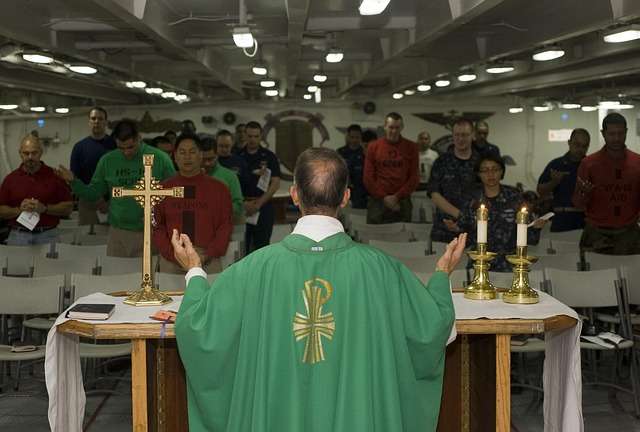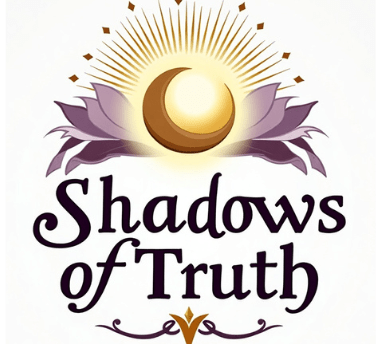In its treatment of Religious Life, Lumen Gentium says II that “the evangelical counsels of chastity dedicated to God, poverty and obedience are based upon the words and examples of the Lord. They were further commanded by the apostles and Fathers of the Church, as well as by the doctors and pastors of souls” (LG 43). Unlike other parts of Lumen Gentium, this long sentence is given without any supporting quotation from the Bible.
Five years ago, I discussed with some scholars who proffered very credible reasons for the argument that there is no biblical foundation to religious life. What they meant was that there is no biblical narration about a figure or persons who lived a religious life as it is lived in the Church today, that is, life in community and according to the three vows of obedience, poverty, and chastity.
Lack of proofs for biblical background also implies the absence of any explicit statement of the Lord on consecrated life, as is the case with marriage and divorce (cf. Mark 10:1-12; Matt 19:3-9). They consider unnecessary any attempt to look for any witness in the Old Testament, considering the Old Testament’s emphasis on marriage and the command to “increase and multiply”.
What we find are references to related topics like choosing to be a eunuch for the sake of the Kingdom of Heaven (Matt 19:12) and the Pauline encouragement to the early Christians to prefer the unmarried state (1 Cor 7:8-9, 25-40), which do not qualify for a basis to the evangelical counsels.
A closer study of these New Testament witnesses shows that they represent teachings that were about other issues. In Mark and Matthew.
The statement about eunuchs was not a teaching given for its own sake. It is Jesus’ response to the disciples’ question on the perplexing nature of marriage and divorce. Seeing that mar7ia(2e was divinely designed to be a lifelong contract, and that divorce is against God’s will except for reasons of unchastity, the disciples of Jesus expressed their fears about the possibility of marrying without sinning against God. For them, it was better not to marry.
Jesus responded to their apprehension by saying that besides there is another state of life: the eunuch, who is either made so by nature, or by another, or chosen freely for the sake of the Kingdom of Heaven. Secondly, the Pauline preference for the unmarried state depends exclusively on what he calls “the impending crisis” (1 Cor 7:26).
Paul clarifies that he was not speaking based on any divinely given command (1 Cor 7:12, 25) but his reflection on how he thought Christians should live given the Parousia which was expected soon (1 Cor 7:29). Given the impending Parousia, therefore, Paul recommended marriage only to those who could not control their passion.
Others should begin to live solely for the Lord in holiness and rid themselves of the anxiety associated with the married state, that is, worrying about how to please the husband or how to please the wife. I understood the argument of my colleagues. These New Testament witnesses may not qualify as the foundation of religious life, which is defined as a close and radical following of Jesus.

Nevertheless, the fact remains that religious life is not the only biblical theme that was not defined for its own sake. Many other themes, like the prayer ‘Our Father’ were given in a similar circumstantial context, yet it is taken as a foundational Pattern of prayer for Christians.
It has also been argued that religious life is a historical development in the Church, whose beginning is traceable to the post-apostolic church, especially to those early Christians who dedicated themselves to a gospel-oriented life-style, to a radical following of Jesus Christ.
Anthony of Egypt (4th century A.D.) was the first person to do this. He was followed by a line of disciples until what began as single, isolated cases grew into an institution in the Church. The early religious did not profess particular vows, but they lived a life according to the gospel or specific aspects of the gospel, such as poverty, service to the sick, or the poor.
The foregoing arguments, notwithstanding, the present author argues that if Anthony of Egypt’s radical (‘decision was inspired by Christ’s words, then religious life has a biblical foundation. The biblical quotations offered in support of the definition of Religious Life in Perfecta Capitates (Vatican II: Decree on the Adaptation and Renewal of Religious Life) support the idea that it is life lived in imitation of the life of Jesus Christ.
So the biblical background for religious life is Jesus Christ. In his article “Understanding a Theology of Religious Life”, D.L. Fleming underlines the benefits of describing the notion of’ consecration as evangelical.6 Although there are no explicit statements from the Lord that present the three vows as categories of discipleship, evangelical consecration involves two things.
Firstly, it implies that the religious vows of chastity, poverty, and obedience are “so central to Jesus’ life and message that they become a natural locus for intensifying a life dedicated to following Jesus as seen in the Gospels”. Secondly, since religious consecration is founded on the baptismal consecration, evangelical consecration also implies that religious life is a heightened and intensified form of. Christian discipleship.’
To this witness of the life of Jesus, one could add Old Testament ideas that prepared the way for the Church’s statement that consecration is the foundation of religious life. It is, therefore, possible to find in the biblical tradition a sure foundation for consecrated life in the Church. In the previous blog post, we noted the contribution of Vatican II to a new perspective in the understanding of religious life as a life of consecration. Fleming affirms that with this definition, Vatican II presents the religious as those who “consciously and professedly strive for holiness more closely in imitative of Jesus and his values.”‘
Since more than forty years after Vatican II, some works on religious tile have been written as a deepening of this new locus on religious life. The present work recognizes the great importance of using the concept of ‘consecration’ as central to a definition of religious life and, different from the approach of most recent authors, it makes its discussion revolve exclusively around this foundational concept. In doing this, it intends to achieve the following results.
Firstly, since the idea of consecration implies that only God consecrates, this new focus discourages any definition of religious life as the result of merely historical events. Rather, it places religious life exactly within the place where it belongs, that is, in the initiative and call of God.
Secondly, consecration is founded on the event of Christ. Therefore, it underscores, more than any other concept, an understanding of religious life that fits into a pattern of election in the economy of salvation.
It presents the religious as particular sharers in the divine nature. Having been called to be more intensively conformed to the image of Christ, they are particular intermediaries in the economy of salvation. Thirdly, it discourages opinions that place the background of religious life outside of the biblical tradition. Therefore, it argues that if the idea of the ‘holy’ underlies religious life, then we are within the biblical tradition.
In the following paragraphs, this section of the work studies the term ‘consecration’ in the Bible, and based on the nature of the evidence, it will further discuss some biblical images of consecration, as well as draw out its different levels of meaning and its goals.
The Term ‘Consecration

The term consecration derives from the word ‘hoiy, or ‘holiness’, which translates the Hebrew word qadosh and the Greek word hagios. The Hebrew verb qadash and its Greek equivalent hagiazo are translated as to consecrate’, ‘to make holy’ or ‘to sanctify’. Its correlate is tahar which means ‘to purify’ together with the noun tohar which means ‘purity’.`’ Reading through the passages in which it occurs, qadash appears to be used in connection with other roughly synonymous words like badil (to divide) and nazar (to separate, to consecrate Lev 15:31; Ezek 14:7).
The verbs qadash and nazar are used in the following texts: Numbers 6:5-7,12 All the days of their nazirite vow no razor shall come upon the head; until the time is completed for which they separate themselves to the LORD, they shall be holy; they shall let the locks of the head grow long. All the days that they separate themselves to the LORD, they shall not go near a corpse.
Even if their father or mother, brother or sister, should die, they may not defile themselves; because their consecration to God is upon the head…and [they] separate themselves to the LORD for their days as nazirites, and bring a male lamb a year old as a guilt offering. The former time shall be void, because the consecrated head was defiled. In these texts, the terminology describes the state of a person’s foundation of religious life. Which is defined as a close and radical following of Jesus.
Nevertheless, the fact remains that religious life is not the only biblical theme that was not defined for its own sake. Many other themes, like the prayer ‘Our Father’ were given in a similar circumstantial context, yet it is taken as a foundational pattern of prayer for Christians.
It has also been argued that religious life is a historical development in the Church, whose beginning is traceable to the post-apostolic church, especially to those early Christians who dedicated themselves to a gospel-oriented life-style, to a radical following of Jesus Christ. The first person to do this was Anthony of Egypt (41′ century A.D.).
He was followed by a line of disciples until what began as single, isolated cases grew into an institution in the Church. The early religious did not profess particular vows, but they lived a life according to the gospel or specific aspects of the gospel, such as poverty, service to the sick, or the poor.
The foregoing arguments, notwithstanding, the present author argues that if Anthony of Egypt’s radical (1 Cision was inspired by Christ’s words, then religious! I read a biblical foundation. The biblical quotations offered in support of the definition of Religious Life.
Decree on the Adaptation and Renewal of Religious Life) support the idea that it is life lived in imitation of the life of Jesus Christ. So the biblical background for religious lire is Jesus Christ. In his article “Understanding a Theology of Religious Life”, D.L. Fleming underlines the benefits of describing the notion of consecration as evangelical.’ Although there are no explicit statements from the Lord which present the three vows as categories of discipleship, evangelical consecration implies two things. Firstly, it implies that the religious vows of chastity, poverty, and obedience are “so central to Jesus’ life and message that they become a natural focus for intensifying a life dedicated to following Jesus as seen in the Gospels”.
Secondly, since religious consecration is founded on the baptismal consecration, evangelical consecration also implies that religious life is a heightened and intensified form of Christian discipleship.’ To this Witness of the life of Jesus, one could add Old Testament ideas that prepared the way to the Church’s statement that consecration is the foundation of religious life.
It is, therefore, possible to find in the biblical tradition a sure foundation for consecrated life in the Church. In the previous chapter, we noted the contribution of Vatican II to a new perspective in the understanding of religious life as a life of consecration. Fleming affirms that with this definition, Vatican II presents the religious as those who “consciously and professedly strive for holiness more closely in imitative of Jesus and his values.’



